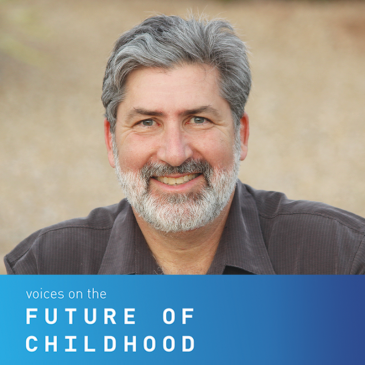For Part 2 of the Voices on the Future of Childhood series, we asked experts to take a stab at predicting the future by offering their thoughts on “What will change in the coming months and/or years as a result of the coronavirus pandemic.”
Linear institutions challenged by exponential change

Alan Gershenfeld is President of E-Line Media, Co-Founder of Experimental Design and Co-Author of Designing Reality: How to Survive and Thrive in the Third Digital Revolution.
The current pandemic has highlighted the tension between exponentially unfolding events and institutions that change at a more linear pace. Educational institutions, often resistant to change, have been both challenged and resourceful when responding to the crisis.
For years, epidemiologists have warned that a global pandemic was inevitable. And yet, few educational institutions were prepared for the dramatic implications. It’s been particularly challenging for public K-12 schools. The sudden shift to online learning has been painful, especially in communities lacking universal broadband and where essential needs provided by schools aren’t widely available.
Schools, along with public, philanthropic, and social service agencies, are shaking loose institutional inertia to help close these gaps with real progress. We need to ensure we hold these gains after the crisis and that our educational institutions are more agile and proactive moving forward.
This won’t be the last crisis. Cascading climate impacts along with our increasing ability to manipulate bits, atoms, and genes will bring new and rapidly unfolding risks (and opportunities). Educational institutions need to be prepared. Understanding accelerating changes, rates of change, and scenario planning is a critical 21st century skill.
This is an opportunity for leaders and students. Imagine if college students, when declaring a major, had to research and assess how their chosen disciplines will be impacted by emerging and transformational changes. Similar explorations could be designed for middle and high school students. We could cultivate a generation not only prepared for possible futures, but also able to proactively shape preferred futures.
See more posts in this series:
Voices on the Future of Childhood
Alan Gershenfeld | Caroline Hu Flexer | David Kleeman | Jeremy Bailenson
Matthew Kam | Michael Rich | Mimi Ito | Warren Buckleitner

